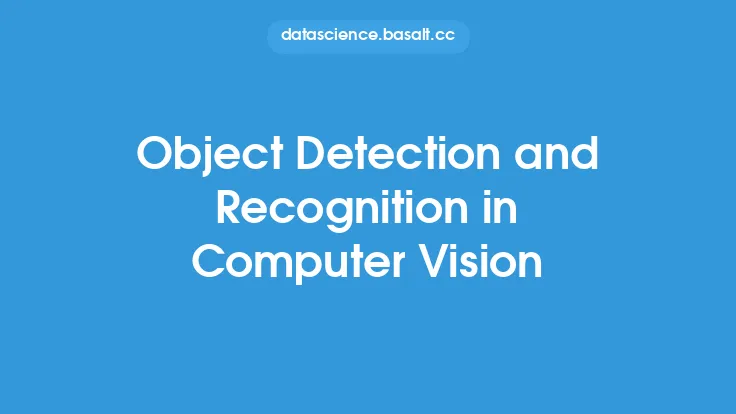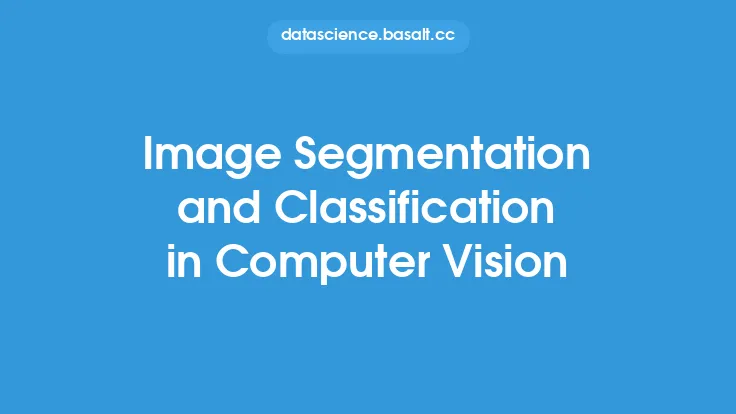Computer vision is a field of study that focuses on enabling computers to interpret and understand visual information from the world. It is a subset of artificial intelligence (AI) that deals with the development of algorithms and statistical models that allow computers to process, analyze, and understand digital images and videos. The goal of computer vision is to automate tasks that would typically require human visual perception, such as object recognition, image classification, and scene understanding.
History of Computer Vision
The history of computer vision dates back to the 1960s, when the first computer vision systems were developed. These early systems were able to perform simple tasks such as image processing and object recognition. However, it wasn't until the 1980s that computer vision began to gain significant attention, with the development of more advanced algorithms and techniques. The 1990s saw the introduction of machine learning techniques, such as neural networks, which further improved the capabilities of computer vision systems. Today, computer vision is a rapidly growing field, with applications in areas such as robotics, healthcare, and security.
Key Concepts in Computer Vision
There are several key concepts that are fundamental to computer vision. These include:
- Image formation: This refers to the process by which an image is formed, including the capture of light, the formation of an image on a sensor, and the conversion of the image into a digital format.
- Image processing: This refers to the techniques used to enhance, transform, and analyze digital images. Common image processing techniques include filtering, thresholding, and feature extraction.
- Feature extraction: This refers to the process of extracting relevant information from an image, such as edges, lines, and shapes.
- Object recognition: This refers to the ability of a computer vision system to identify and classify objects within an image or video.
- Scene understanding: This refers to the ability of a computer vision system to interpret and understand the context of a scene, including the relationships between objects and the overall layout of the environment.
Computer Vision Techniques
There are several techniques that are commonly used in computer vision, including:
- Template matching: This involves comparing a small image (the template) to a larger image to find a match.
- Feature-based methods: These involve extracting features from an image, such as edges or lines, and using these features to perform tasks such as object recognition.
- Machine learning-based methods: These involve using machine learning algorithms, such as neural networks, to learn patterns and relationships within images.
- Deep learning-based methods: These involve using deep learning algorithms, such as convolutional neural networks (CNNs), to learn complex patterns and relationships within images.
Applications of Computer Vision
Computer vision has a wide range of applications, including:
- Robotics: Computer vision is used in robotics to enable robots to perceive and understand their environment, including object recognition and scene understanding.
- Healthcare: Computer vision is used in healthcare to analyze medical images, such as X-rays and MRIs, and to diagnose diseases.
- Security: Computer vision is used in security to detect and recognize individuals, track objects, and monitor environments.
- Autonomous vehicles: Computer vision is used in autonomous vehicles to enable them to perceive and understand their environment, including object recognition and scene understanding.
- Quality control: Computer vision is used in quality control to inspect products and detect defects.
Challenges in Computer Vision
Despite the many advances that have been made in computer vision, there are still several challenges that must be addressed. These include:
- Variability in lighting: Changes in lighting can significantly affect the performance of computer vision systems.
- Occlusion: Objects may be partially or fully occluded, making it difficult for computer vision systems to detect and recognize them.
- Clutter: Cluttered environments can make it difficult for computer vision systems to detect and recognize objects.
- Pose and viewpoint: Changes in pose and viewpoint can significantly affect the performance of computer vision systems.
Future of Computer Vision
The future of computer vision is exciting and rapidly evolving. Advances in machine learning and deep learning are enabling computer vision systems to perform increasingly complex tasks, such as object recognition and scene understanding. The development of new sensors and cameras, such as 3D cameras and lidar, is also enabling computer vision systems to perceive and understand their environment in new and innovative ways. As computer vision continues to advance, we can expect to see new and innovative applications in areas such as robotics, healthcare, and security.





